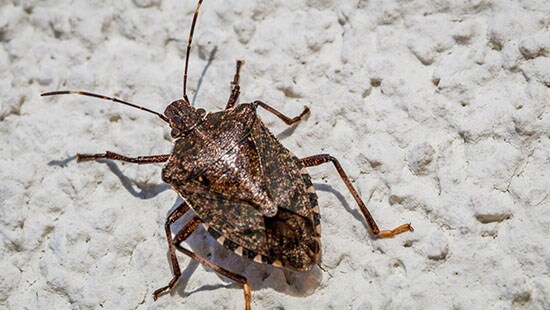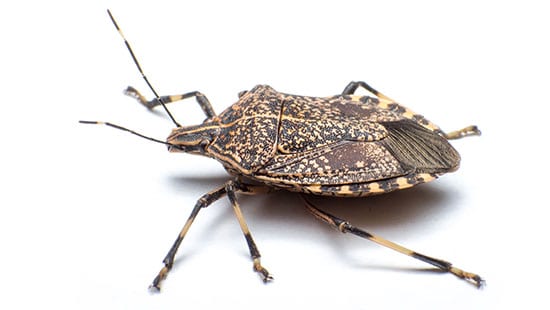Stink Bugs Can Impact Food Facilities and Exports
The Pest Monitor Newsletter

With extreme fluctuations in temperature and precipitation happening this winter, the National Pest Management Association (NPMA) is predicting heightened pest pressure across the U.S. Additionally, the unseasonable warmth of fall in many areas provided occasional invaders like the Brown Marmorated Stink Bug ample time to multiple. The stink bugs are expected to be especially problematic in the northern states where the colder temperatures push them indoors.
Stink bugs become a problem for facilities because of their tendency to cluster on the sunny sides of buildings, then crawl through cracks and crevices to overwinter within the walls as the weather cools. Warmth from inside the building can draw them into the facility throughout the winter, but the bugs become the biggest problem in the spring when they sense the warming weather and begin coming out of the walls – with some moving inward rather than outward.
The best way to reduce or eliminate stink bug entrance is to implement a comprehensive pest program including exclusion and protection. Sealing of cracks and crevices and ensuring doors and windows are well-fit and maintained will help keep bugs from finding entry points, while an exterior barrier of protection and a repellant zone around your building can help keep them from the initial clustering on your facility’s exterior.
Stink bug control is important, not only to protect your food products from contamination but because of their potential spread in the transportation of products. In fact, to mitigate that risk, the quarantine departments of Australia and New Zealand require that any target high-risk or target risk goods manufactured in, or shipped from the United States, and/or vessels that berth at, load or transship from the U.S. between September 1st and April 30th are subject to stink bug seasonal measures.
These measures include treatment by a registered provider that has been approved by the Australian Department of Agriculture and the New Zealand Ministry for Primary Industries to perform BMSB fumigations with Sulfuryl Fluoride and Methyl Bromide. As a registered provider, Ecolab has a national network of fumigators who know the target goods, understand the regulations, and meet all treatment standards.
Related Articles

Brown Marmorated Stink Bug (BMSB) Facts
- Approximately 12-17mm long, mottle brown in color, and shield-like in shape
- Distinct white bands and brown bands on antennae and legs distinguish is from other stink bugs
- Named for the foul “smelly foot” odor it emits when crushed
- Efficient at secreting an odor to draw in other stink bugs when it finds shelter
- A nuisance pest that feeds on and spreads disease to vegetables, fruits and nuts
- Native to Eastern Asia; introduced to North America in the late 1990s and has since spread rapidly
- Primarily an outdoor bug, but can invade facilities in high numbers


